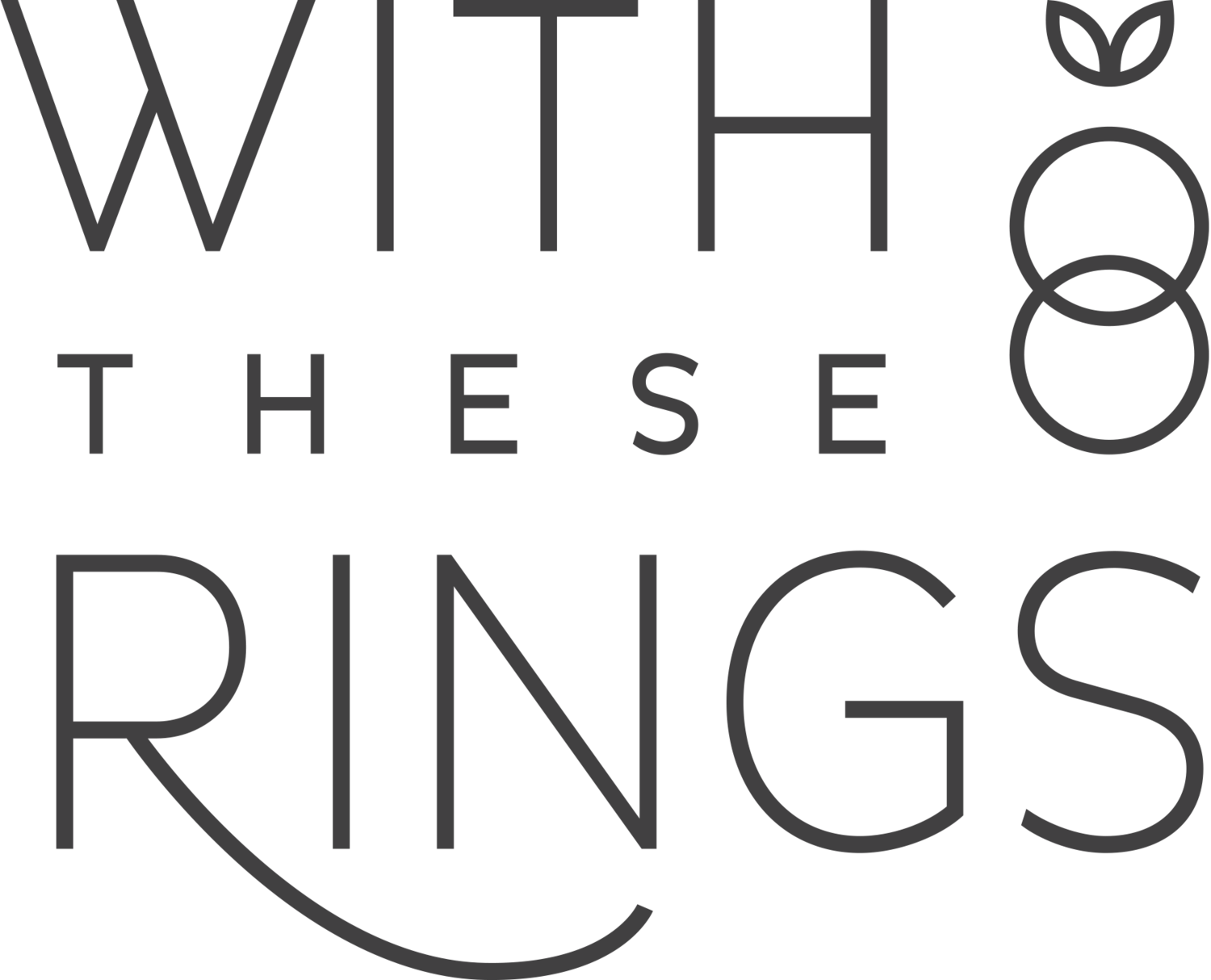Many people have a lot of questions about the different colors and karats of gold. There are so many options which can make it confusing and a little overwhelming. So let me make it simple by telling you about the basics behind alloys. 24 karat gold is 100% pure gold which is a rich, yellow color and far too soft to hold up to the everyday wear of a wedding band. So how do we make rings that we can wear? Alloys! Alloys are created by mixing different metals with the pure gold to create a stronger version of itself.
Karats of gold are created by mixing different ratios of metals. 14k gold is incredibly durable containing 58% pure gold. 18k gold is also strong but quite not as durable since it contains 75% pure gold. This makes it a richer yellow color and the more precious (and expensive) option. All colors of gold still contain the same amount of pure gold per karat.
Yellow Gold
All gold starts as pure yellow gold. In the case of white gold and rose gold it is actually the metals they are alloyed with that gives them their color. In the case of yellow gold the mix is equal parts silver and copper, with a small amount of zinc.
Rose Gold
Rose gold, like yellow gold, is alloyed with silver, copper and zinc. However, the ratio is shifted to incorporate more copper and less silver, resulting in a warmer hue. But don't worry it is not nearly enough copper to turn your finger green.
Peach Gold
Peach gold falls right in between yellow and rose gold and is the closest color match to antique rose gold. Its hue is just a little softer than yellow gold, without being as coppery as the rose gold. Peach gold is only offered in 18k for fabrication.
Palladium White Gold
Silver is another metal that is alloyed. Fine (or pure) silver is unalloyed and incredibly soft and malleable. Sterling silver is an alloy made up of fine silver and copper, it is more durable than pure silver. Palladium sterling silver is a stronger silver option, but still very soft compared to gold alloys. Learn more about silver here.
Palladium white gold is a mix of pure gold, copper, silver, and palladium. This option is slightly grayer in color than nickel bearing white gold. Learn more about white gold and other white metal options here.
Bottom line, for wedding bands that you plan to wear everyday 14k or 18k golds will stand the test of time. From there you just have to decide which color and karat best fits your personal taste and budget.
Colors may appear different on different monitors. The color comparisons used are photographs of metals with a brushed finish.
